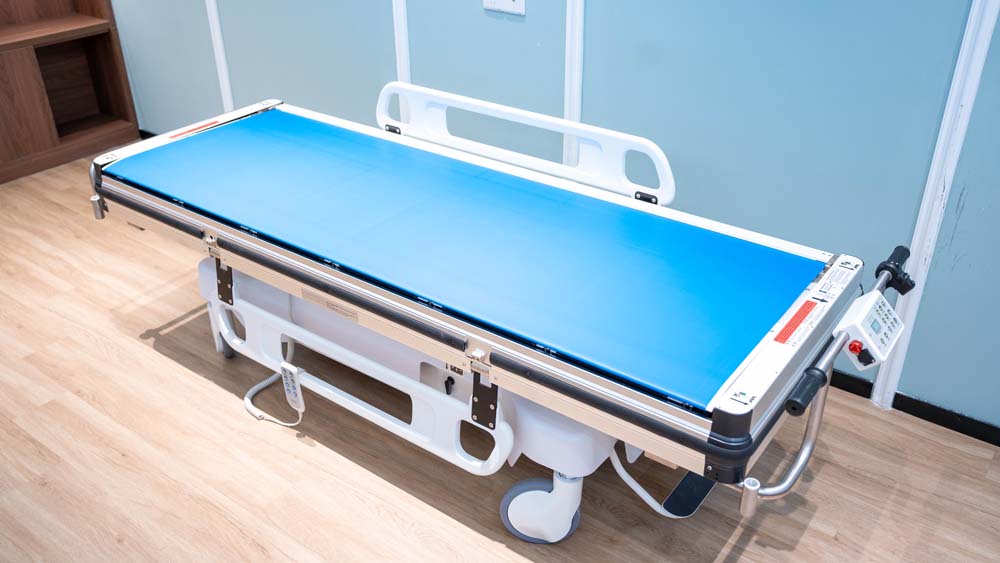In healthcare facilities, electric patient transport beds are critical to safely moving patients, reducing transit times while minimizing physical stress on staff. However, these transport beds face constant exposure to pathogens and mechanical stresses. Proper disinfection and maintenance is not just a matter of hygiene; They are an investment in longevity, cost efficiency and patient safety. So how to maintain and maximize the life of the electric patient transport bed? This article will tell you the answer.

1. Decontamination protocols to eliminate risks
After each use, first wipe all surfaces with an EPA-approved hospital grade disinfectant. Focus on high-contact areas such as railings, control panels, and mattress platforms. For cracks and joints, use cotton swabs dampened with disinfectant to avoid residue buildup. Always follow the electronic component manufacturer's guidelines - many control panels require an alcohol-free solution to prevent damage. Allow the surface to air dry completely before using. For electric transport beds with removable parts, such as headboards, they should be disassembled and thoroughly cleaned to remove hidden contaminants.
2. Periodically check key components
The pre-use checklist ensures that minor issues do not escalate. Start with the battery: Check for leaks, corrosion, or expansion. Check the charging port for debris to ensure a safe connection. Second, check the wheels and brakes, worn tires or loose brake cables can affect stability. Check that all seatbelts and latches are in working order. Do not neglect the motor housing: excessive noise or heat during operation may indicate internal wear. For hydraulic systems in certain medical transport vehicles, check fluid levels and leaks monthly.
3. Handling common problems
Power failure: If the bed cannot be started, check the battery terminals for corrosion. If plugged in, test the socket to make sure the charger is not faulty.
Erratic movement: Debris in a motor or wheel bearing often causes convulsions. Clean and lubricate moving parts.
Brake failure: Tighten loose cables or replace worn brake pads immediately. Never bypass a security lock, even temporarily.
For complex issues such as motor burned-out or control panel errors, consult the manufacturer's manual or contact a certified technician. Stopgap solutions may seem cost-effective, but they compromise patient safety.
4. Proactive maintenance to achieve long-term reliability
Deep cleaning is scheduled quarterly, with a focus on the chassis and engine compartment. Replace worn casters immediately - uneven wheels can strain the motor and frame. Train staff on proper loading techniques to avoid overloading. For facilities with multiple
patient transfer beds, a rotation system is implemented to evenly distribute wear and tear.
5. Extend equipment life through smart practices
Buy a protective cover to protect the bed from dust and liquids when not in use. Encourage employees to report anomalies as early as possible, as minor fixes can hinder major repairs. Update maintenance log regularly to track maintenance history and warranty period. By treating transport beds as vital assets, rather than just equipment, healthcare providers ensure they remain reliable for years to come.
Continuous care for electric patient transport beds is not optional - it is the cornerstone of operational efficiency. From rigorous disinfection to timely repair, these practices safeguard patient care and reduce long-term costs. Prioritize maintenance today, and tomorrow it will reward you with unparalleled reliability.


